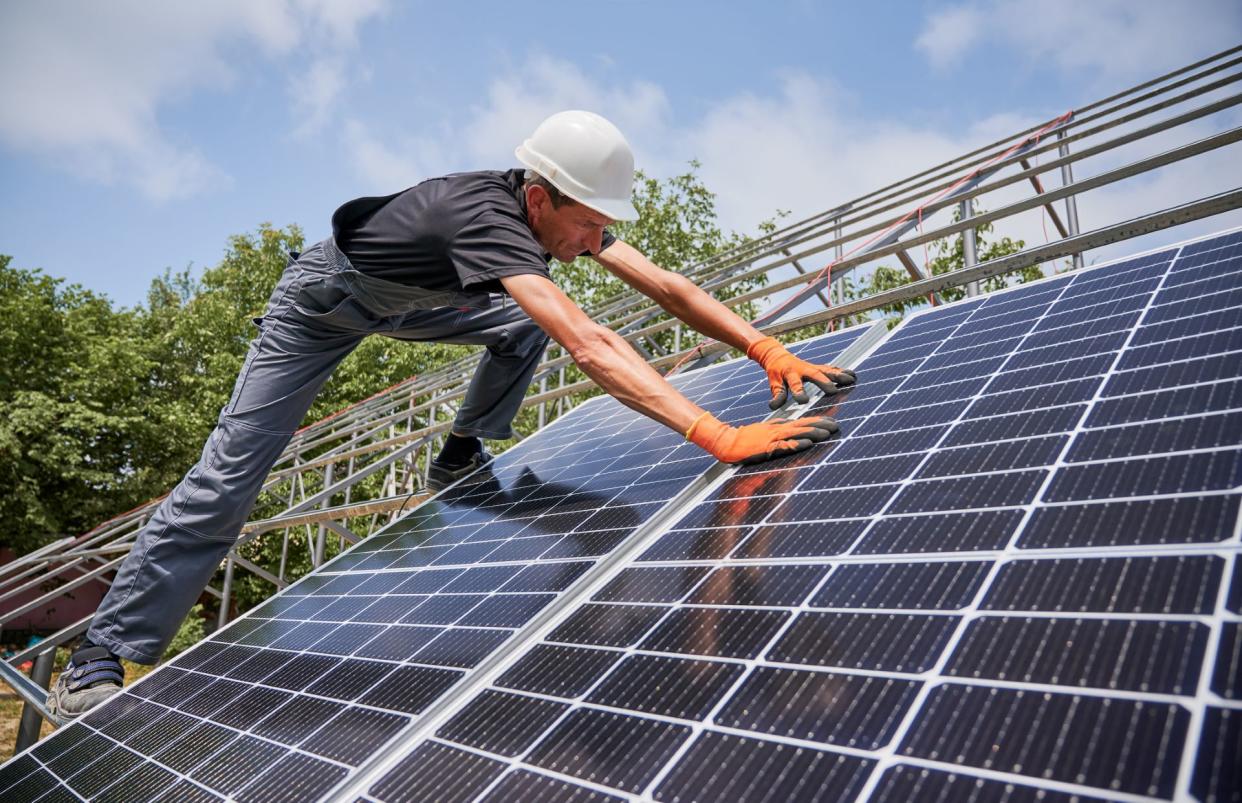Solar panels are lighting up homes across the world — but how do they actually work?

You might’ve seen a neighbor or two install solar panels on their roofs. These panels are quickly becoming a popular way to increase homes’ property values while simultaneously chopping energy bills.
But even as they skyrocket in popularity around the world as a source of abundant, clean energy, not everyone knows how they work.
How do solar panels work?
When sunlight hits a solar panel, the light particles — also known as photons — knock electrons free, causing them to flow within the solar panel. Next, this flow of these electrons creates a current, which generates electricity.
This process of converting a flow of electrons into a current is called the “photovoltaic effect” and is where the name “photovoltaic cell,” or solar cell, comes from.
How are solar farms and arrays wired to the grid?
Solar farms are usually wired to the electrical grid through a combination of solar panels and inverters. The electricity generated by the solar panels is then sent to the inverters and then to the grid.
When a home solar array is installed, it is also connected to the electrical grid. This connection allows the home to use the solar energy generated by the array while also allowing the house to use electricity from the grid when needed. asfdsfds
Some people are concerned that if their solar array generates more electricity than they use, they won’t be able to store it. This isn’t the case. If your home generates more electricity than you use, the excess energy will be sent back to the grid, and you won’t need to worry about losing any power.
In these instances, if the homeowner lives in an area with “net metering,” then he or she can actually profit off of the energy bill.
Why get solar panels now?
If you’re considering getting solar panels for your home, this year is the perfect time to do it. Thanks to the Inflation Reduction Act, a 30% tax credit is available for households that opt for rooftop solar.
This 30% tax credit, which is easily worth thousands of dollars, can go toward both the equipment as well as any installation costs.
Join our free newsletter for easy tips to save more, waste less, and help yourself while helping the planet.

